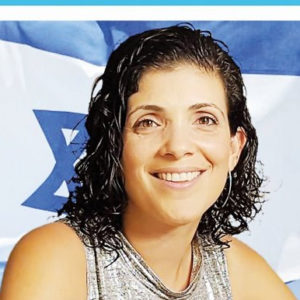Israel
Working on bringing the many tribes of Israel together
The world looks at Israel as a country full of Israelis, but there is no such thing as a typical Israeli. Rather, there are about 30 to 40 different kinds of people who make up the mosaic of Israeli society, many of them wanting nothing much to do with the other.
Liat Amar Arran, the director of the Israel Centre in South Africa, was a guest at Greenside Shul last weekend, 25 June, and spoke to the congregation about the complexities of the multicultural country.

She has a deep understanding of this, having come from a Sephardi family where both sets of grandparents came from Tunisia. She described how having come from an originally Arab-speaking family, they were, to a certain extent, alienated from Israel’s predominantly Ashkenazi culture.
“How could I bring my friends back home to a home that spoke Arabic?” she asked rhetorically, pointing out that the narrative of 1940s, 1950s, and 1960s Israel was one of putting aside cultural differences in favour of building a single, Zionist, predominantly European narrative.
Because of that, she wasn’t taught to speak Arabic. That’s was a pity, she says. “To be able to understand 20% of the population is a big gift. Why wasn’t this given to us?”
The idea of a single narrative started to change in the 1970s as Israelis started to question their roots and traditions. It heralded a new age of multiculturalism, which came to fruition 30 years later in 2015, with President Reuven Rivlin’s “four tribes” initiative. At the time, Rivlin pointed out, “We’re no longer one Israel, we’re four tribes.”
The truth is, Amar Arran told the congregation, “We’re actually 30 to 40 tribes in Israel. Sephardi, Ashkenazi, ultra-Orthodox, Bnei Akiva, Mizrachi, Misnagdim, LGBT, women, feminists, etcetera.
“We even have different relationships to the Holocaust, with some families having first-hand experience and others not. We built a state on top of communities from all over the world. The question is, are we able to live together?”
Amar Arran went on to speak about the Living Together project that she was involved in prior to coming to South Africa four years ago. It was Initiated in 2017, and seeks to celebrate diversity among the Israeli population and promote an “innovative social partnership”.
“Alongside Israel’s many exemplary and well-known achievements since statehood, Israeli society faces a fundamental difficulty: how to create a positive lasting connection between different groups, and live together in a society that pursues the common good,” according to the organisation’s website.
“Over the years, numerous social programmes have worked to address this issue. However, the reality is that significant progress hasn’t occurred, while the rifts between communities persist – and at times, are even worse.”
Through this project, 30 different communities were invited to get to know each other, understand one another’s challenges, “find the red line”, and find solutions and a way to live together, Amar Arran said.
“We brought together 30 different leaders,” she said. “We met once every two weeks. We took them to the Ponevitch Yeshiva, met the Rosh Yeshiva. A Sephardi woman in the group asked if he would let his son marry her daughter. The answer was no. A modern Orthodox leader said that his vision was to be able to live in the same apartment building with people who were more Orthodox than him, but a haredi woman said that she wanted to live in a building only with people who looked and behaved like her.
“A religious lesbian shared her story of praying for two years to remove her inclination and eventually accepting it, whereupon an ultra-Orthodox rabbi said that his role had been to help people give up their homosexuality, but for the first time, he realised that he needed to give it more thought.
“Understanding that we don’t have a set vision is part of the process,” Amar Arran said. “We won’t ‘live in one building’.”
She said the first step to true multiculturalism was to understand each other’s pain. “In Israel, everyone has fear – we fear other communities, there’s dislike for the ultra-Orthodox, Arabs, gays, Mizrachi women. I wanted to understand my family’s pain as Sephardim, who settled the country’s borders while Ashkenazim moved into the centre of Israel. We need to understand what’s frightening us.
“To live together, we have to leave space for the pain, but understand that we need to get beyond it and build the future.
“Second, it’s a case of taking small steps, and third, about addressing issues at community level.
“We’re not looking for full justice, but concurrent agreement,” Amar Arran said. “We won’t solve the Shabbat conflict, for example. What we decide in one community may not be relevant to another. It’s not a case of all or nothing, we can aim to live together 60%, even if we’re not able to 100%. Although we’re definitely not the same, we need to build one story, one narrative, and keep building.”
Amar Arran pointed out that in searching for commonalities, the army used to be a shared experience, but now only 50% of Israelis go to the army. Inclusion has shifted to academic institutions, for example, where there’s greater participation amongst Arab women. “These are places where we can build communal values and interact with one another,” she pointed out.
Although Israelis acknowledge the need for diversity, including on company boards, “we’re not there yet”, Amar Arran said. “There’s still a lot of hate, tension, and non-acceptance. We’re just at the beginning.”
“In our generation, we may not find a solution. But if we’re able to live together and not live in isolation, that’s a first step. We aren’t allowed to fail,” she said.